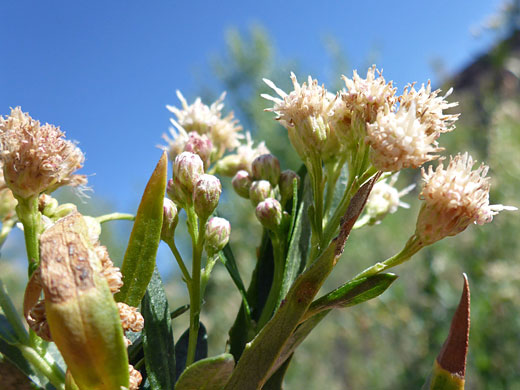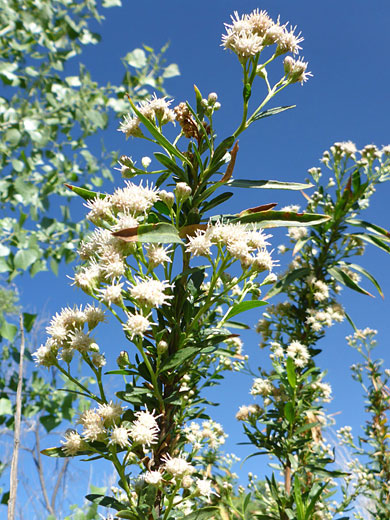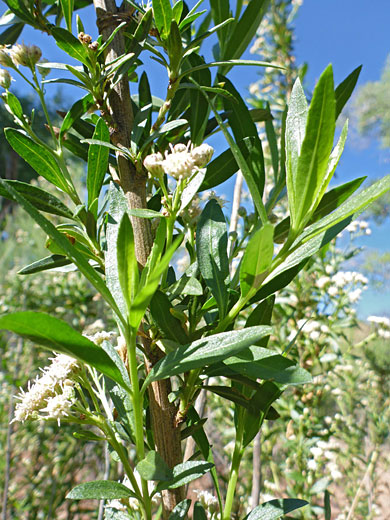Common names:
Water wally, seepwillow, mule fat
Family:
Scientific name:
Baccharis salicifolia
Main flower color:
Range:
Between California and Texas
Height:
Up to 12 feet
Habitat:
Streamsides, canyons; riparian locations; below 4,000 feet
Leaves:
Alternate, lanceolate, up to 5 inches long, usually lined with small, well-separated teeth
Season:
February to December
Baccharis salicifolia inhabits moist, partly shady areas at low elevations, often forming large clumps, and it flowers most of the year. Leaves and stems are usually hairless, and often somewhat sticky due to small resin glands. Plants produce one or a few stems, branching towards the top, the branches pointing upwards or outwards. Relatively long, narrow leaves grow all along the stems; they have small, well-separated teeth along the margins, one prominent central vein and two fainter side veins near the edge.
The inflorescence is a rounded or pyramidal cluster of small, white discoid flowerheads. Heads have either staminate florets (17 to 48) or pistillate florets (50 to 150). Phyllaries are pale green or reddish, arranged in 4 to 5 rows.
The inflorescence is a rounded or pyramidal cluster of small, white discoid flowerheads. Heads have either staminate florets (17 to 48) or pistillate florets (50 to 150). Phyllaries are pale green or reddish, arranged in 4 to 5 rows.
All Contents © Copyright The American Southwest | Comments and Questions | Contribute | Site Map





